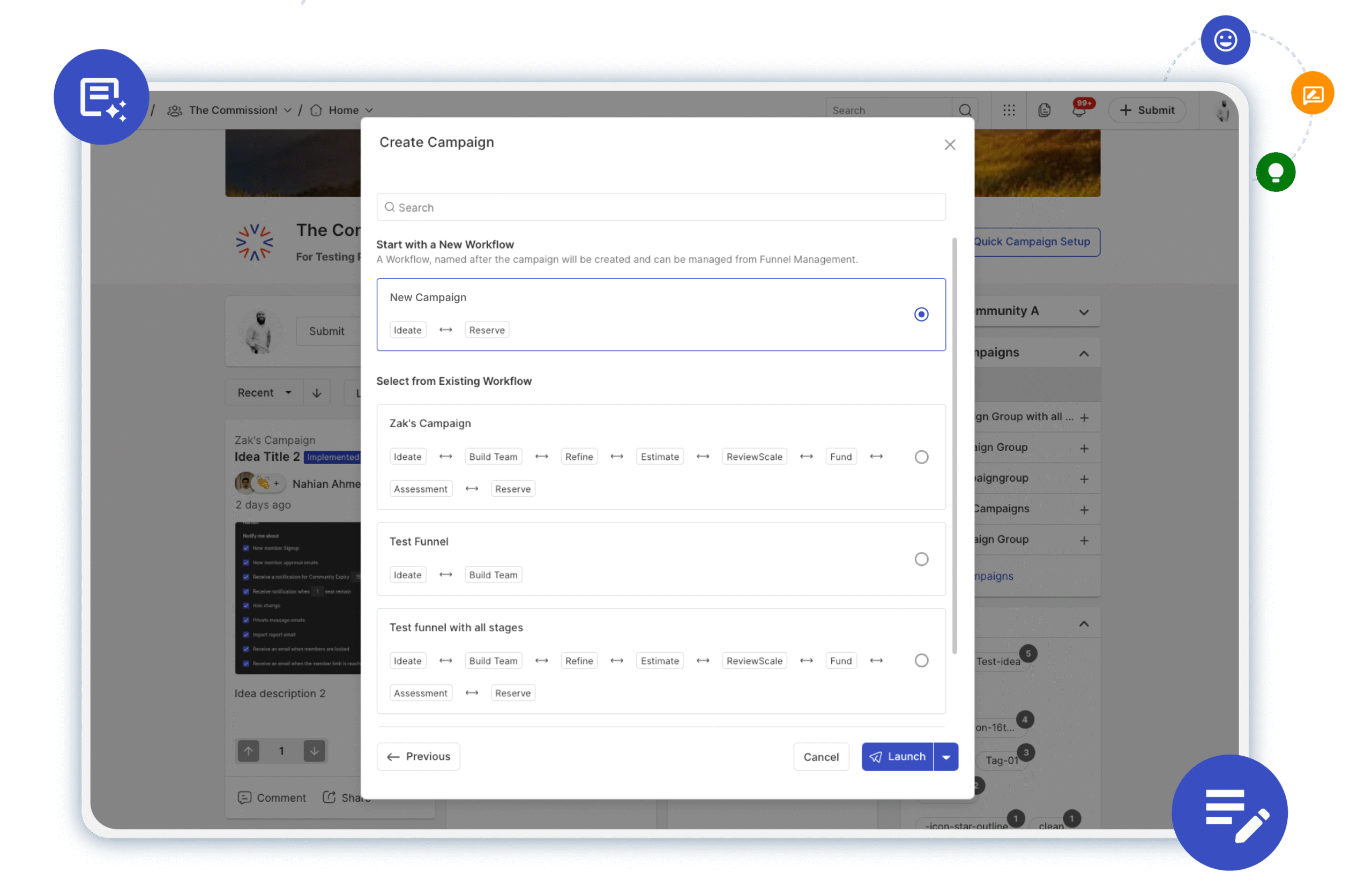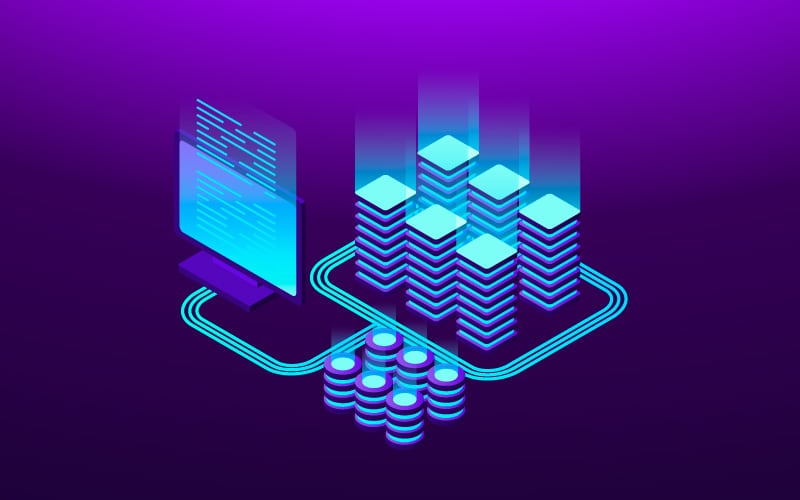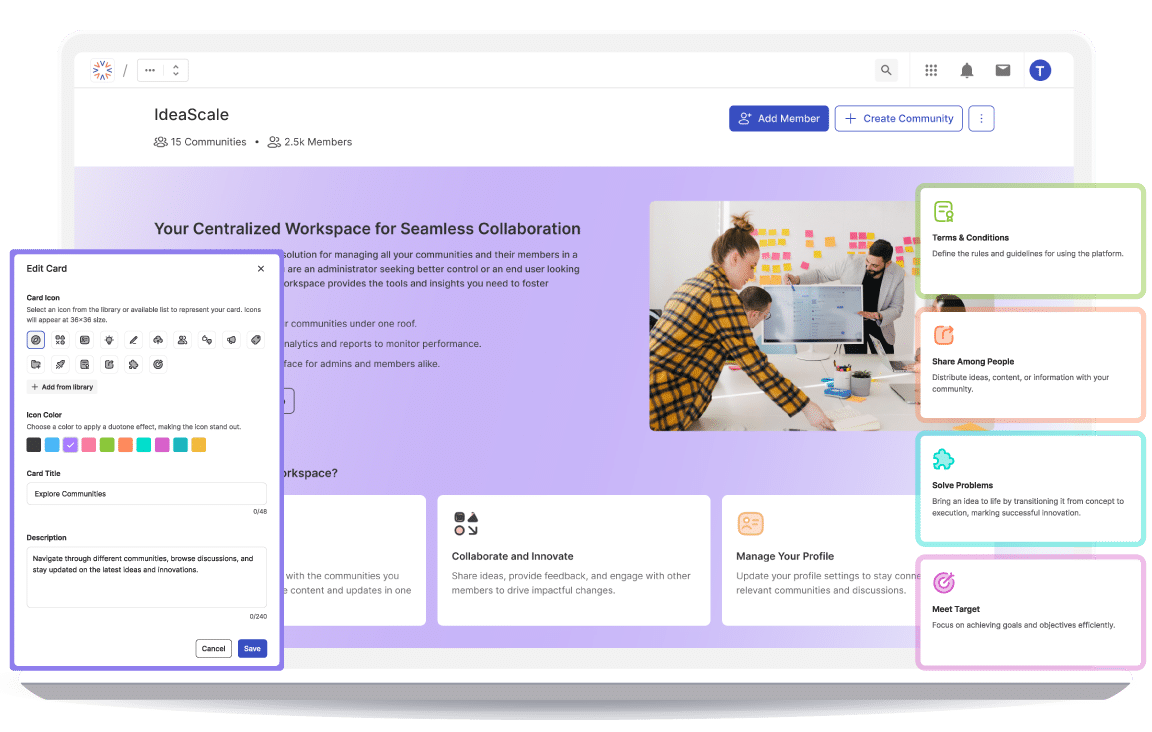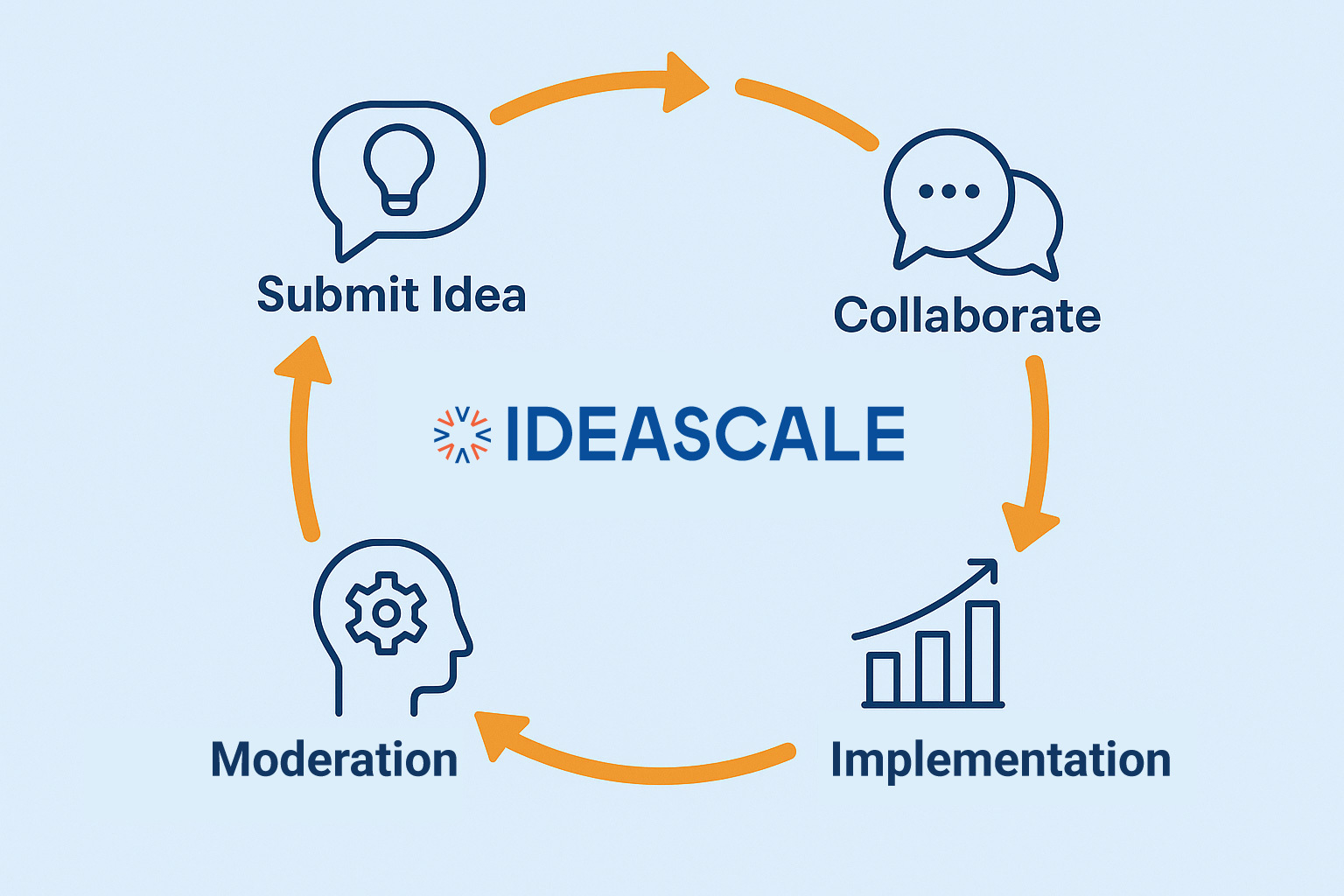It is the nature of advancement to continuously penetrate sectors, enhancing their techniques and plans for the future. Multiple businesses are adapting quick and easy ways to generate ideas that can elevate their brand to new heights, and one of the best ways to plan this is by using an experience map.
What is an Experience Map?
An experience map is defined as a strategic visualization meticulously crafted to illustrate the entirety of a user’s journey in achieving a specific goal, encapsulating a universal understanding of human behavior while also tailoring insights to the unique nuances of a particular business or product. This powerful tool serves as a detailed guide, encompassing touchpoints, emotions, and interactions across diverse channels, offering a holistic view that empowers businesses to enhance customer experiences by addressing specific pain points and optimizing key interactions.
This is an article dedicated to the art of experience mapping and how it is effective for companies and brands, what features it offers, how it works, and all of its advantages that are evident in the market.
Here are the key elements of an experience map:
- User Journey Stages: Experience maps typically break down the user journey into distinct stages, such as awareness, consideration, purchase, and post-purchase. These stages can vary depending on the context and purpose of the map.
- Touchpoints: At each stage, the map identifies and details the various touchpoints where the user interacts with the product or service. This can include website visits, social media engagement, customer support calls, and in-person interactions, among others.
- User Actions and Emotions: Experience maps often include information about the actions users take at each touchpoint and their emotional responses or attitudes. Understanding how users feel at different stages of the journey can help in designing better experiences.
- Pain Points and Opportunities: By documenting user pain points and areas of frustration or delight, organizations can identify opportunities for improvement and innovation. These insights can guide the design and optimization of the customer or user experience.
- Contextual Information: Experience maps may also include contextual information, such as user demographics, goals, needs, and motivations. This provides a deeper understanding of the user’s perspective.
- Visual Elements: Experience maps are usually presented in a visual format, often in the form of a diagram or infographic. This visual representation makes it easier to communicate and share insights with team members and stakeholders.
Experience maps are valuable tools for organizations because they provide a holistic view of the user or customer journey, helping teams identify pain points and opportunities for improvement. This, in turn, can lead to more effective design and a better overall user or customer experience.
How Does an Experience Map Help?
An experience map creates a clear path for companies to set up their new launches by analyzing the market trends. It is also effective for people who deal with customers every day to run their businesses successfully.
On top of this, an experience map can detect loopholes in the customer journey from previous strategies, which can dictate companies to take safe steps. People or companies who want to know all about their customer’s journey and what emotions they’re feeling can utilize an experience map for their next product and reap the benefits later.
Experience Map Features
An experience map has some unique features that allow users to gain a lot of value from using them. Some of these benefits are:
- It collects different experiences from different users and then aggregates them all within one frame. This approach provides maximum understanding with a vast number of different samples.
- An experience map is not tied to one certain customer but collects versatile experiences for a result. Furthermore, experience maps are not linked to one specific brand or product. This allows the user to compare multiple different experiences and products to find the perfect journey.
- It depicts every stage of a customer’s journey, their actions, and emotions in chronological order for its users.
What Does an Experience Map Offer?
By using an experience map, you will be able to identify new trends and adapt them to the advantage of your brand. This will not only make your brand prominent in the eyes of your consumers but will also act as a bridge in creating a healthy communication and brand base.
Other than this, experience mapping helps identify the flaws in the other customer journey maps. This could either be within your product or externally in the market. Either way, using an experience map helps locate elements that can make the customer journey effective and smooth.
By experience mapping, companies can locate potential areas to invest in or advance according to their financial statuses. These advancements often give the brand a new image among the general public and provide a route to increased consumer engagement.
Experience mapping helps identify consumer insights and what they like about the brand. You can either enhance those features or upgrade them to offer something new to your clients.
Why Use an Experience Map?
There is always a need to represent the customer experience for your brand. It acts as a guide for companies to tell them where to improve and what needs to be fixed. It also serves as a guide to enhance your product quality and overall client engagement. These are all critical applications of experience mapping and significant reasons you should use one.
Using an experience map helps catalog every touchpoint or relevant stage where your consumer could have interacted with your brand. This improves decision-making skills and brand image among your consumers. You can alter your movements due to the flexibility of the experience map that lets you decide your next move. This usually happens when customers are showing unique behaviors unknown to the previous record.
Learn more: How to Build An Experience Map?
Experience Map Templates
Most experience maps focus on one specific task or agenda because it makes it easier for companies to make decisions within a particular area. This means they usually have a trendline of emotions that correspond with multiple distinct phases that walk through a singular experience.
However, people who want to make their own experience map can opt to make for whatever shape or pattern they like to have. Patterns include a customer experience journey with a specific brand or product. The other alternative includes experience mapping for a specified project like mobile applications. This one will be more complex and have increased touchpoints and channels, while others will be heavily focused on emotions rather than journey phases.
How to Collect Experience Map Data
Experience maps are made up of many things, but they mostly rely on consumer data. Being able to gather customer opinions is important because it forms the basis of the experience map, but how can you gather their feedback? Here are some popular (and secret) ways to gather customer feedback.
- Social Media
Interacting on social media is an advanced yet effective technique to see the result of your engagement with your consumers. User stories can be submitted to the brand with the consent of consumers and can even be posted on social media profiles by tagging the brand. This is a way to engage a different and vital audience, and for some brands, this will be a critical method of feedback generation.
- Cold Calling
Cold calling is not the most effective way to get user feedback due to connection issues at some places and people being generally unwilling to respond to a random number. However, it is a basic element to know what your consumers are experiencing after interacting with your brand. Consumers can also feel engaged due to the brand’s consideration for them.
- In-product Tracking
Product tracking and usage often come in applications and software products because they allow you to map the actions and goals of the user automatically.
Usage of such products also tells what customers think about a certain brand. This could reveal important information that’s tangentially associated with the product. Maybe people find the product brilliant, but they dislike the brand association.
- Analytics
Analytics is an old-school way to see your brand’s effectiveness among the masses. Utilizing analytics carefully explains the crucial details of customer experience with the product. Analytics helps us to see whether a technique or tool works or not. This is the case with experience maps; their analytics give a transparent picture of their effectiveness.
Learn more: Experience Map vs. Customer Journey Map
Experience Map Example
Experience mapping is a powerful tool that enables us to visualize and empathize with the journeys of different individuals interacting with a product, service, or organization. In this blog segment, we will explore three distinct examples of experience maps: the Employee Experience Map, the User Experience Map, and the Customer Experience Map. By delving into these examples, we will uncover how each type of map can be used to enhance and optimize the respective experiences.
Employee Experience Map
The Employee Experience Map is defined as a valuable tool for understanding and improving the journey of employees within an organization. It is a visual representation of an employee’s interactions, emotions, and touchpoints from recruitment to offboarding. This map helps HR professionals and managers to identify pain points, strengths, and opportunities in the employee journey.
A typical Employee Experience Map might include the following stages:
- Recruitment and Onboarding
- Learning and Development
- Daily Work Experience
- Career Growth and Opportunities
- Offboarding and Exit
By creating an Employee Experience Map, organizations can better design their human resource strategies, build a positive work culture, and enhance overall employee satisfaction. For example, identifying pain points during the onboarding process can lead to improvements in training and mentorship, resulting in happier and more productive employees.
User Experience Map
User Experience (UX) Maps are defined as a crucial tool for companies that aim to provide exceptional product and service experiences. A UX map outlines the user’s journey from the moment they become aware of a product or service to the point where they complete their desired action. This map helps design teams to identify areas where users might face difficulties or frustrations.
A standard User Experience Map often includes these stages:
- Awareness
- Initial Engagement
- Interaction with the Product or Service
- Feedback and Support
- Conversion or Desired Action
- Post-Conversion Experience
For instance, an e-commerce business can use a User Experience Map to identify drop-off points in the user journey. If they find that potential customers often abandon their carts during the “Interaction with the Product” stage, they can then focus on improving the product descriptions, images, or checkout process to reduce friction and increase conversions.
Customer Experience Map
A Customer Experience Map, also known as a CX map, is defined as a visual representation of the various touchpoints and interactions that a customer has with a business or brand throughout their entire journey, from initial awareness and consideration to post-purchase support. This map offers insights into the holistic journey a customer undertakes when interacting with a brand or organization. CX maps are valuable for understanding customer satisfaction, loyalty, and areas that require improvement.
A comprehensive Customer Experience Map may include these stages:
- Awareness and Discovery
- Initial Contact
- Product or Service Evaluation
- Purchase Decision
- Post-Purchase Engagement
- Loyalty and Advocacy
A good example of a Customer Experience Map in action is a hotel chain identifying that their online check-in process is causing delays and frustration during the “Initial Contact” stage. By streamlining the check-in process and providing clear instructions, they can enhance the customer experience and potentially gain repeat business.
Brief Experience Map Advantages
Experience maps come with multiple advantages. Some of them are centered on human behavior, and others are product-centric.
Experience maps provide a complete overview of any situation and customer experiences throughout the journey. It allows companies to change their strategies for better user interactions without wasting time.
Because of its user-centric approach, there are multiple chances of favorable outcomes from experience maps. In this way, brands can secure their positions in the market, create better user engagements, and reintroduce the same product if necessary.
An experience map lets its users analyze from a whole different perspective. They can locate several flaws and loopholes before time and secure their positions and reputations from falling.
Learn more: Experience Map Applications
Conclusion
One thing about the experience map that is unique and impactful is its analytics and predictions related to the market. However, other alternatives to experience maps, like customer journey maps, work slightly differently but yield evident results.
In the end, choose maps suitable for your business and market position and try to implement experience maps for a given issue where you need to find a specific answer to improve your brand or your company’s situation.
Most Recent Posts
Explore the latest innovation insights and trends with our recent blog posts.













